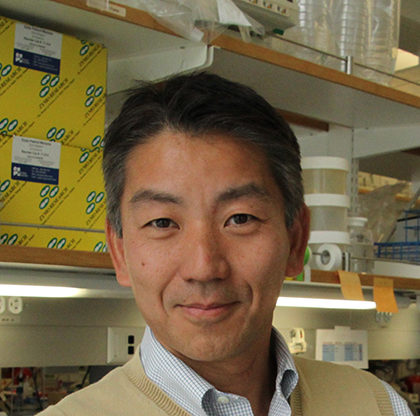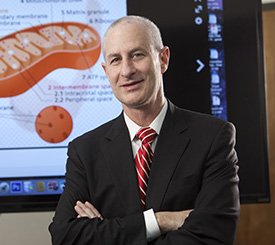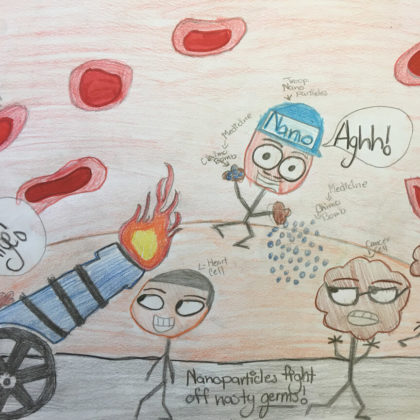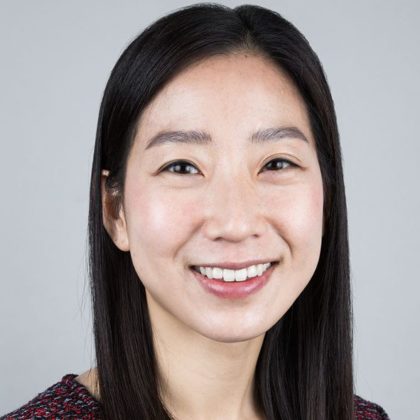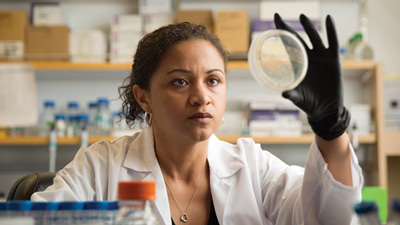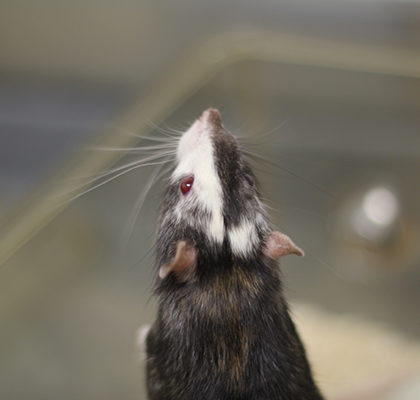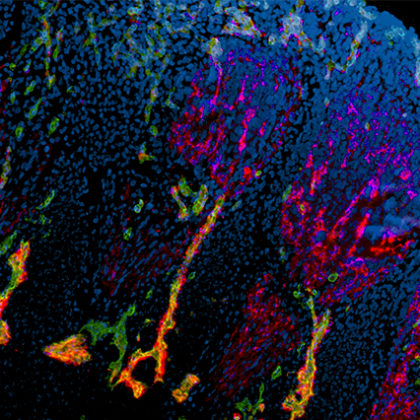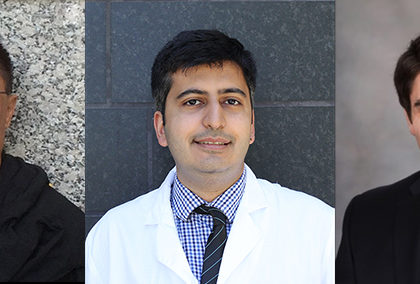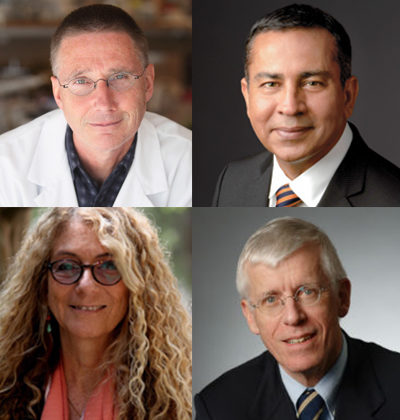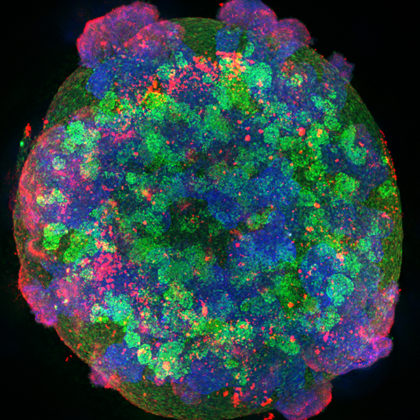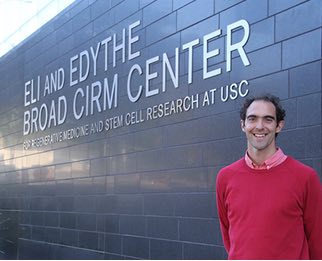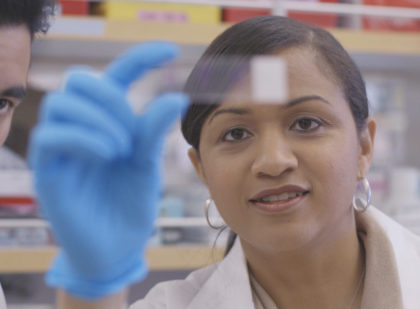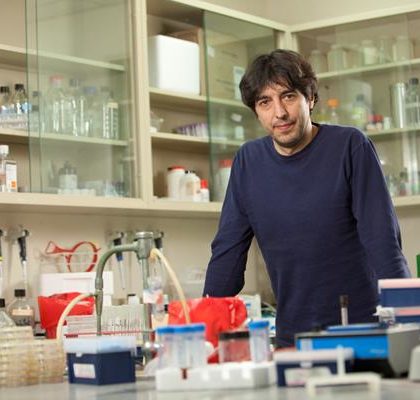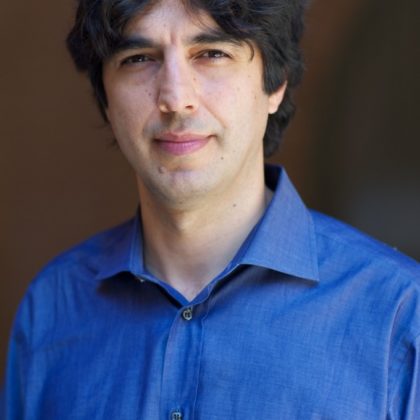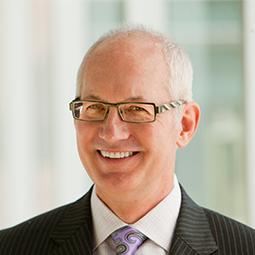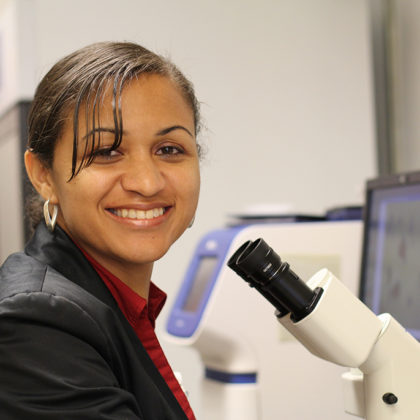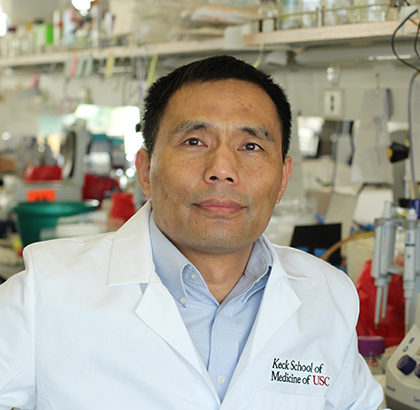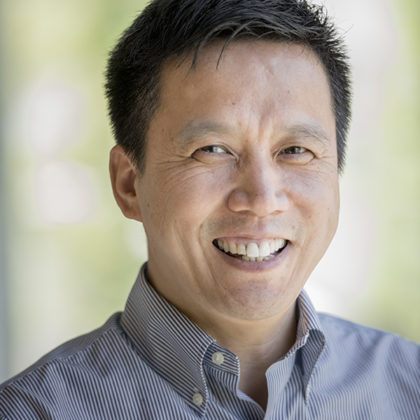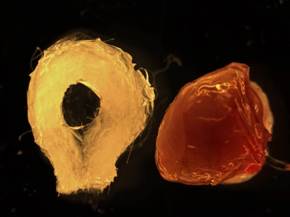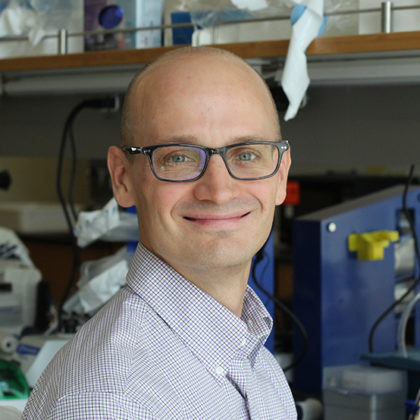Stem cells offer hope for children with Hurler syndrome
Without enzyme replacement therapy or a blood or marrow transplant, children born with Hurler Syndrome usually die before they reach 10 years old. Hurler Syndrome is a rare genetic disease that leaves …
Pinchas Cohen recognized as top influencer in aging field
A newly published list of 2017’s top 50 “Influencers in Aging” includes Pinchas Cohen, dean of the USC Leonard Davis School of Gerontology and principal investigator with USC Stem Cell. The list …
Peeking into the science world
For adolescents, social media use is nearly inevitable. According to “Science Daily,” a website that circulates recently developed research news headlines, 76 percent of teenagers in the United States actively use Instagram …
Eun Ji Chung receives 2017 AIChE 35 Under 35 Award
To describe Eun Ji Chung as “goal-oriented” might be the understatement of the year. Chung, a Gabilan Assistant Professor in the USC Viterbi Department of Biomedical Engineering and USC Stem Cell principal investigator, …
A revolution in genetics
Courtesy of Children’s Hospital Los Angeles Adding a piece of DNA to treat diabetes A child develops a rare form of diabetes, due to the absence of a single piece of DNA …
USC Stem Cell researchers receive $3 million of NIH funding to produce sophisticated laboratory rats
USC Stem Cell principal investigator Qi-Long Ying and his team are pleased to introduce a new transgenic animal—the conditional and inducible gene knockout rat. Created using embryonic stem cell-based technology, these remarkable …
Whittier Foundation backs new group of research projects
The L.K. Whittier Foundation has been a critical source of funding for cancer research at the Keck School of Medicine of USC and the USC Norris Comprehensive Cancer Center, supporting clinicians and …
Broad Clinical Research Fellows strive to regenerate lymph nodes, liver and kidney
The lymph nodes, liver and kidney are not passive filters for toxins, but complex organ systems that perform an astonishing array of critical functions. To help patients who have suffered damage to …
NIH funding helps Americans live longer and healthier
The nation’s medical research agency, the National Institutes of Health, funds research to help Americans live longer and healthier. Some 148 Nobel Prize winners have received support from the NIH, demonstrating how …
USC’s stem cell scientists secure the dollars to fight disease
The price of progress is not only the energy and talent of stem cell scientists, but also the research dollars that support their discoveries. In recent months, faculty members have secured numerous …
From professional volleyball to stem cell biology, Leonardo Morsut is at the top of his game
For USC Stem Cell researcher Leonardo Morsut, the word “set” refers to a collection of scientific data. “Set” is also the prelude to spiking a volleyball over the net—something he used to do for a living as a professional athlete in Italy.
Beta booster: Senta Georgia works at the front lines in the fight against diabetes
Part of Children’s Hospital Los Angeles’ “We Went First” feature for 2017 Women’s Day Credit a school field trip with inspiring Senta Georgia to change the world. When Georgia was a young …
Fasting-mimicking diet may reverse diabetes in mice
By Beth Newcomb A diet designed to imitate the effects of fasting appears to reverse diabetes, a new USC-led study shows. The fasting-like diet promotes the growth of new insulin-producing pancreatic cells …
Scientifically-designed fasting diet lowers risks for major diseases
What if you could lose weight and reduce your risk of life-threatening disease without any changes in what you eat—other than a five-day special diet once every few months? That’s what happened …
D. Brent Polk named AAAS fellow
D. Brent Polk, a member of the USC Stem Cell executive committee and vice dean for clinical affairs at Children’s Hospital Los Angeles (CHLA), is among five USC scientists who have been …
What I’m Reading: Top pick from stem cell faculty member Senta Georgia
Earlier this year, a team at the Karolinska Institute published a paper that profiled gene activity in single cells from human embryos created in the context of in vitro fertilization. Now this …
What I’m Reading: Top pick from stem cell faculty member Qi-Long Ying
In a recent study published in Cell Stem Cell, Joshua Black and colleagues demonstrated that skin cells are converted into neurons using a powerful tool called CRISPR/Cas9 to concurrently modify and activate …
What I’m reading: Top pick from stem cell faculty member Wange Lu
Our genetic material is packed into the nucleus of the cell, but is the packing process random or organized in some way? In a recent study published in Cell Stem Cell, Krijger …
Functional human tissue-engineered liver generated from stem and progenitor cells
A research team led by investigators at The Saban Research Institute of Children’s Hospital Los Angeles has generated functional human and mouse tissue-engineered liver from adult stem and progenitor cells. Tissue-engineered Liver …
What I’m reading: A top pick from stem cell faculty member Joseph T. Rodgers
In a recent issue of Science, Jay Shendure, Alexander Schier and colleagues present an extraordinarily powerful new approach to trace the lineage of cells as they divide within an organism.
